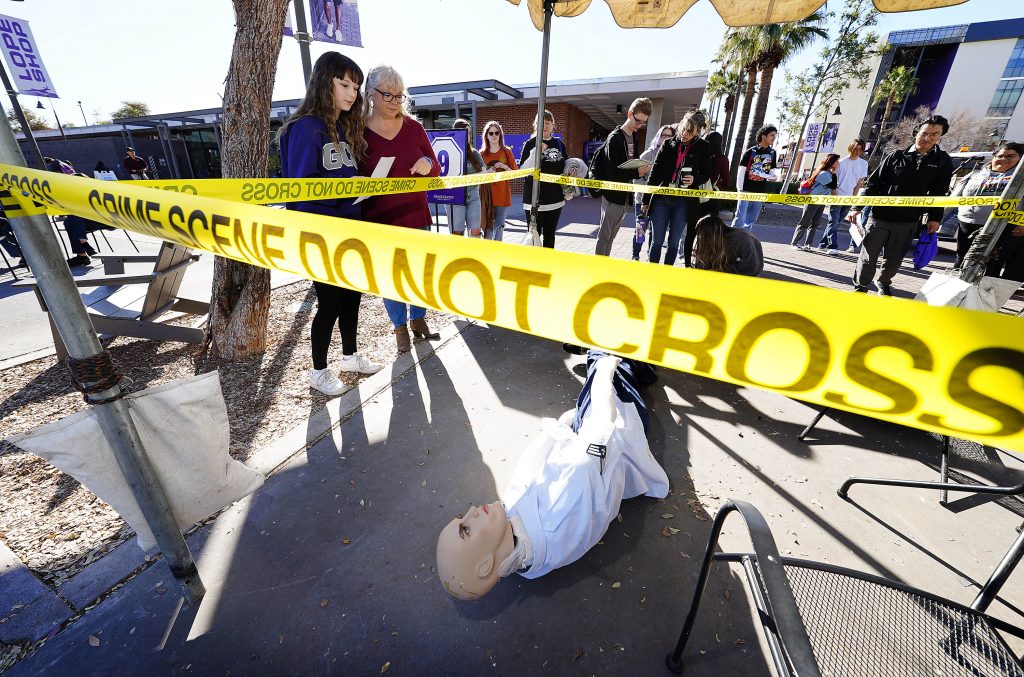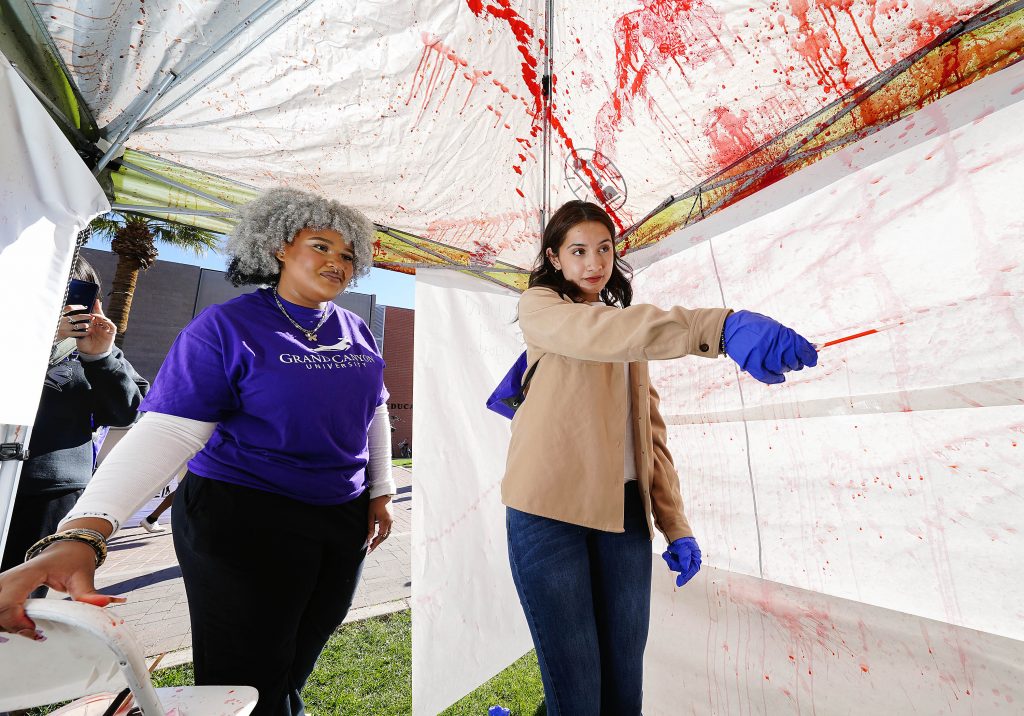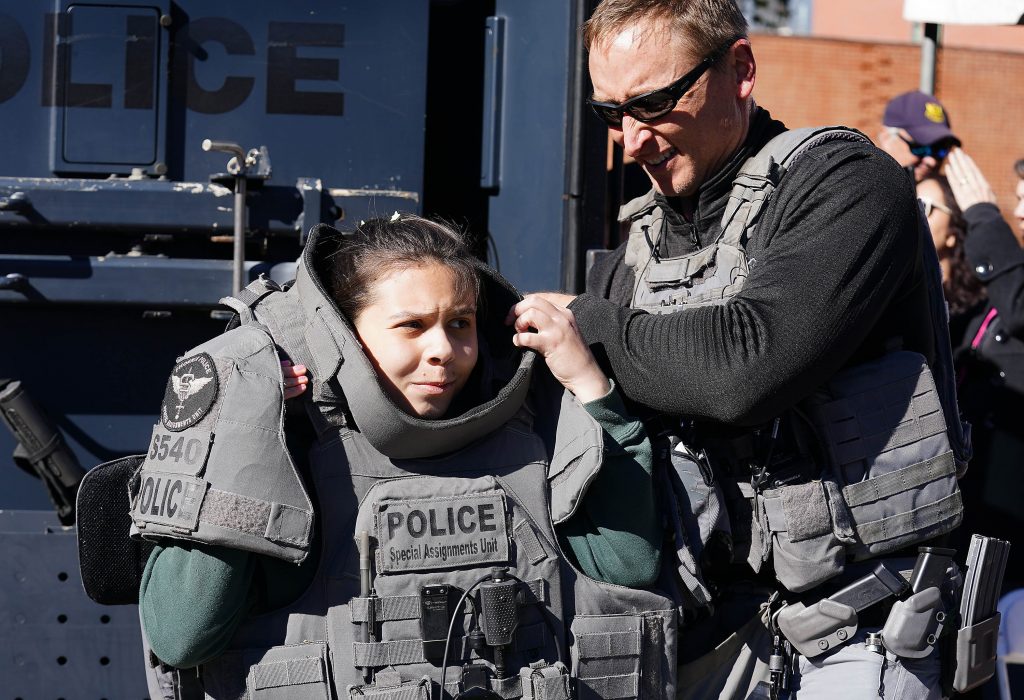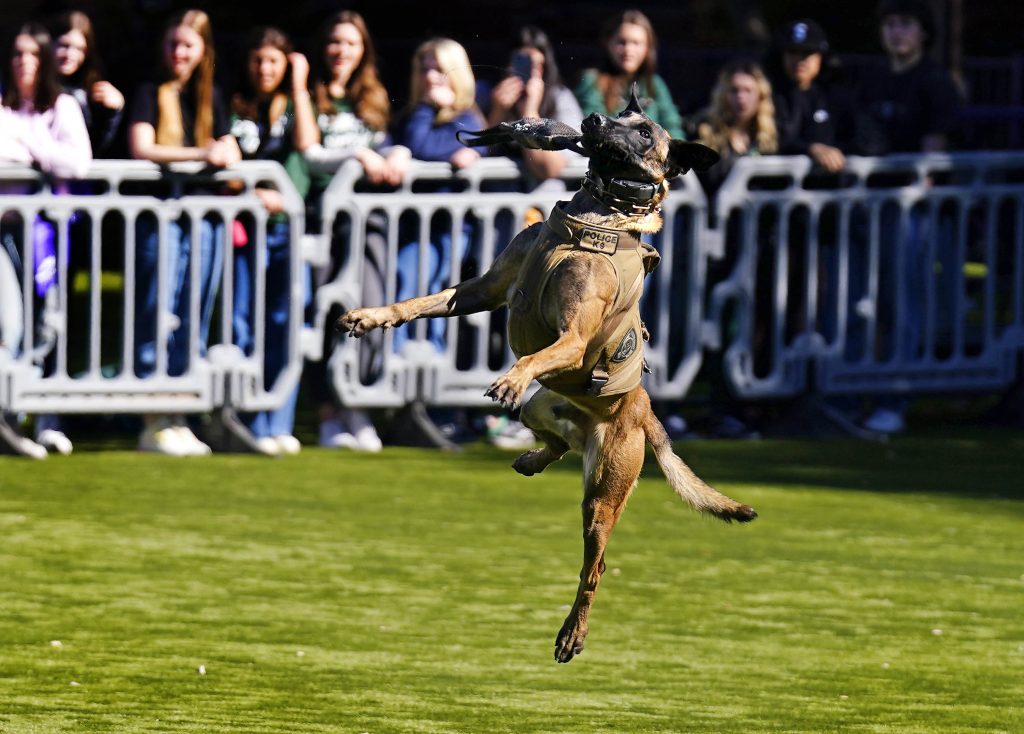
Photos by Ralph Freso / Slideshow
A trip through Forensic Science Day at Grand Canyon University includes fake blood, guns, crime scenes and a lot of talk of bad guys.
“It either freaks you out or excites you,” said Dr. Melissa Beddow, Associate Professor and Program Director of Forensic Science in GCU’s College of Science, Engineering and Technology.
On Tuesday morning in GCU Arena, its plaza and the south end of the Promenade, there was plenty of excitement as more than 1,100 Arizona high school students and their teachers from 41 schools engaged in interesting, and sometimes grim, activities.

Its meaning went beyond solving murder mysteries for fun.
“It’s important. It’s what allows us to aid the criminal justice system, providing science to solve crimes,” Beddow said. “And that’s the definition of forensic science, the application of science to law.”
Forensic Science Day at GCU began in 2012 and has steadily grown to expose high school and community college students to the field.
“It’s a way to get them critically thinking about evidence,” she said.
GCU’s undergraduate and graduate programs are popular because they're situated in a major population center where numerous law enforcement agencies have labs for internships and future employment, Beddow said.
Ty Klep is evidence. The 2015 graduate was one of the first four-year graduates to attain a forensic science degree at GCU, he said. He’s now a forensic scientist specializing in firearm examinations with the Phoenix Police Department.
Klep was one of several expert speakers during the day and led a lecture on numerous firearm examinations, among them the differences of cartridge cases left at a crime scene. Forensics experts can tell by various markings not only what gun propelled it but the age of the weapon by manufacturing equipment wear, which creates different patterns on the barrel and ultimately on the casings.
While it sounds mind-numbingly detailed, Klep said afterward that interest remains high. Job opportunities in the field are growing because of increased interest from all the crime shows but so are the number of graduates seeking jobs.
Watching Tuesday’s participants, enthusiasm isn’t waning.

Israel Omega Thompson was excited to join his team from Ridgeline Academy in Anthem in analyzing a crime scene. Behind the yellow tape was a prone dummy surrounded by evidence, a random shoe of a different size than the victim, spent cartridges, a cell phone and other indicators. He was sure he had it figured out.
“Someone killed him,” he said, not wanting to give away his answer to win the challenge.
Thompson said the day was a fun way to see what goes into the field, though he doesn’t think he could get comfortable with crime scenes.
Students lined up to analyze shoe impressions, do field sobriety tests, have blood analyzed and enter a booth where they could choose a weapon, then soak it in fake blood to throw against the tarp, showing the different blood spatters it leaves. Turns out hammers leave much different designs than a knife.

Another popular stop: Students pressed their fingers to balloons to see the uniqueness of their fingerprints.
Fingerprints weren’t used until the 1903 case of William West, whose body measurements matched an identification to arrest him, only later discovering that he was an identical twin to a murder convict. Identical in every way but their fingerprints, GCU senior Grace Albright described to high school students.
“We get to show that we study real science, beyond the TV shows,” she said. “There’s a lot of ‘Criminal Minds’ fans who have their Hollywood goggles on and see the glamour and excitement. But we do a lot of hard work.”
She first got interested in forensic science out of her own sense of glamour.
“I really like shoes,” she said. “Turns out, shoes are really unique.”
Especially when a suspect leaves an impression after running from a crime scene.
Phoenix police were out in full force on campus, even the Phoenix Police Special Assignments Unit that is especially busy during Super Bowl week in Phoenix. Students crowded their armored vehicle, climbed inside it, and lifted body armor vests lined with metal and M4 guns built for combat to feel their weight.
While touring the DNA or cadaver labs on campus captivated their science minds, the rousing applause was for Phoenix Police’s K9 officers, Belgian Malinois who performed acrobatic catches of bite targets on the Quad.

Officer Lisa Fisher, a K9 handler of Eli, who off duty occupies a kennel in her home, said her partner rooted out two guys hiding in a ravine recently, but mainly Eli has been training how to “look for drugs and bad guys.”
All those activities led high school students to interesting avenues of science and law enforcement, beyond the biology that Kofa High School science teacher Andrea Ward normally teaches in Yuma.
She said that she persuaded her administrators to add forensic science to the curriculum this year and brought six students to GCU.
“This really opens their eyes to the possibilities,” she said.
Grand Canyon University senior writer Mike Kilen can be reached at [email protected] or at 602-639-6764.
***
Related content:




